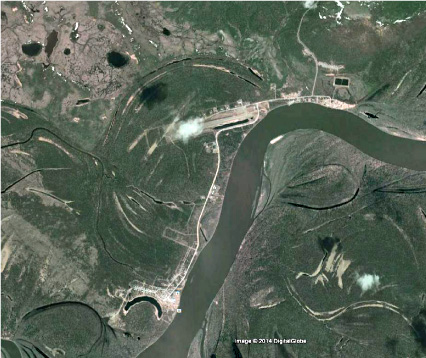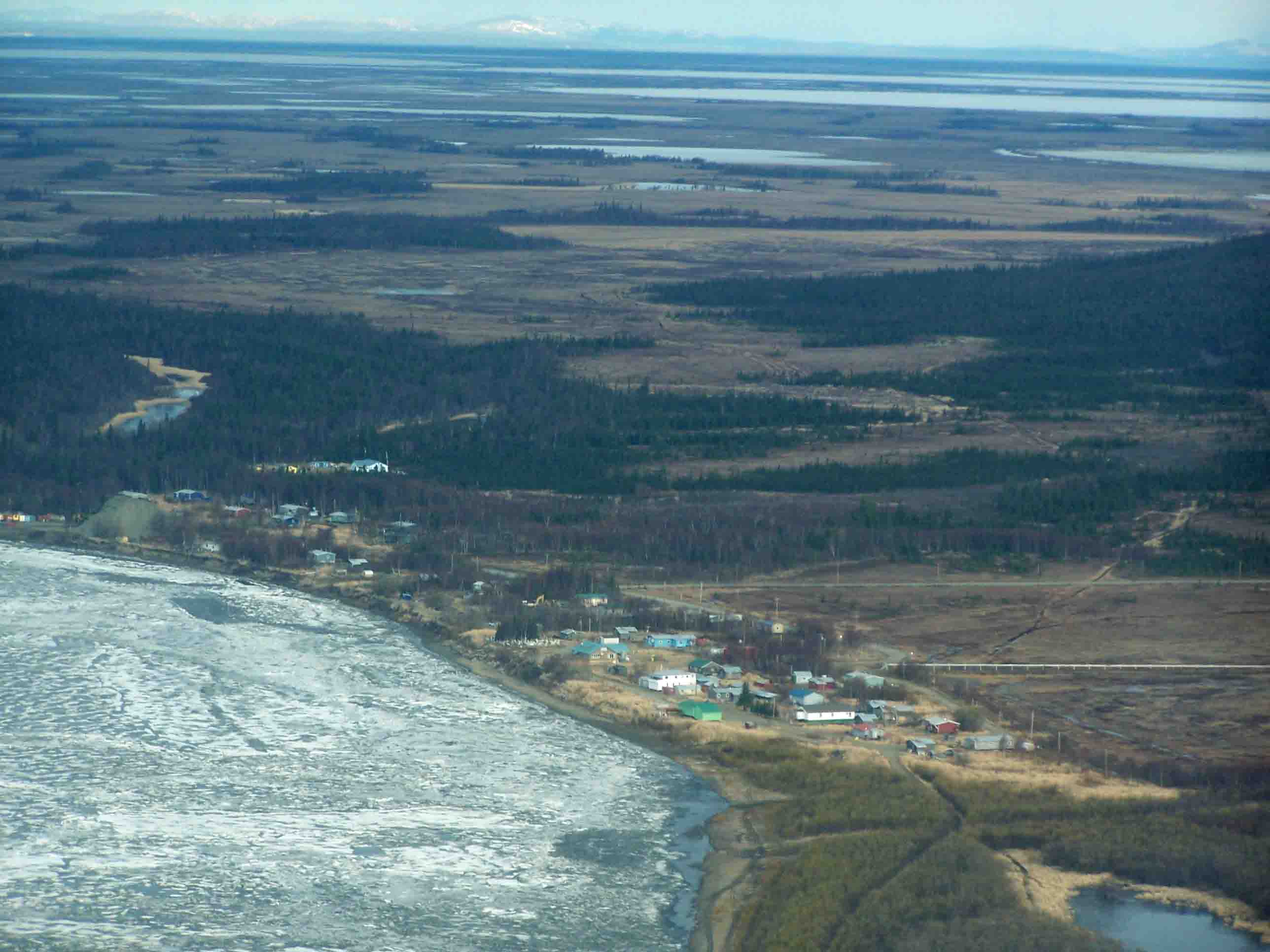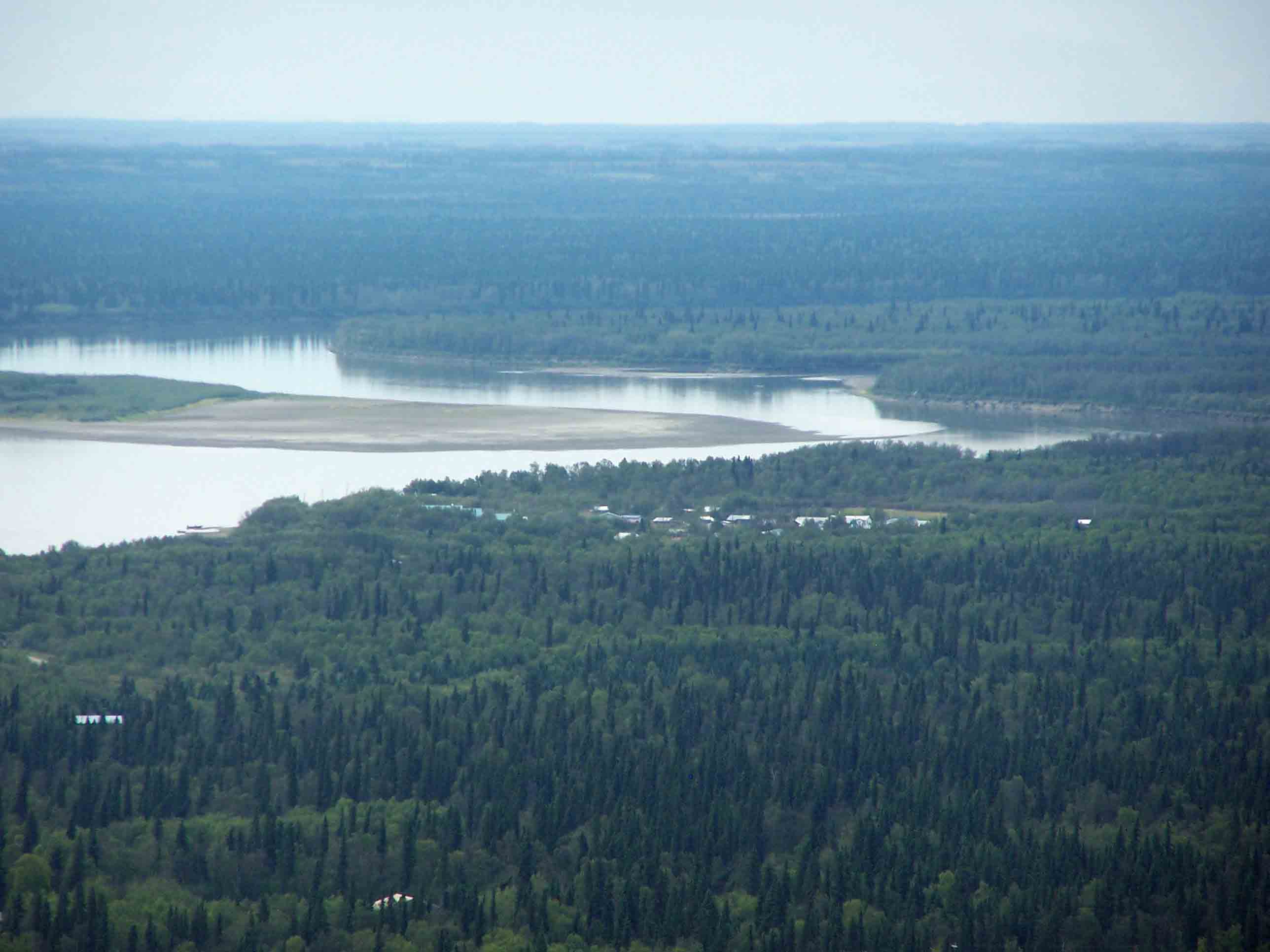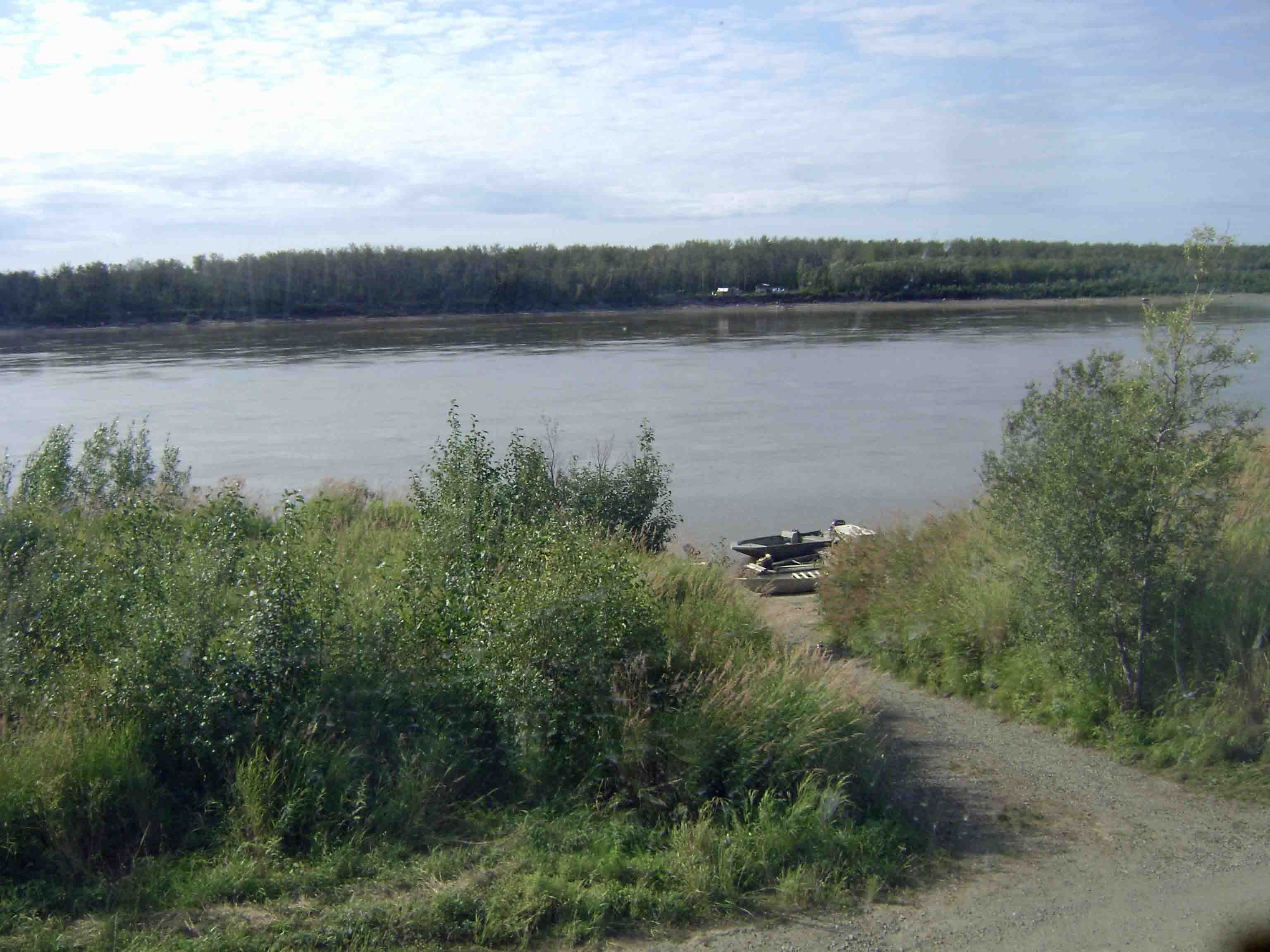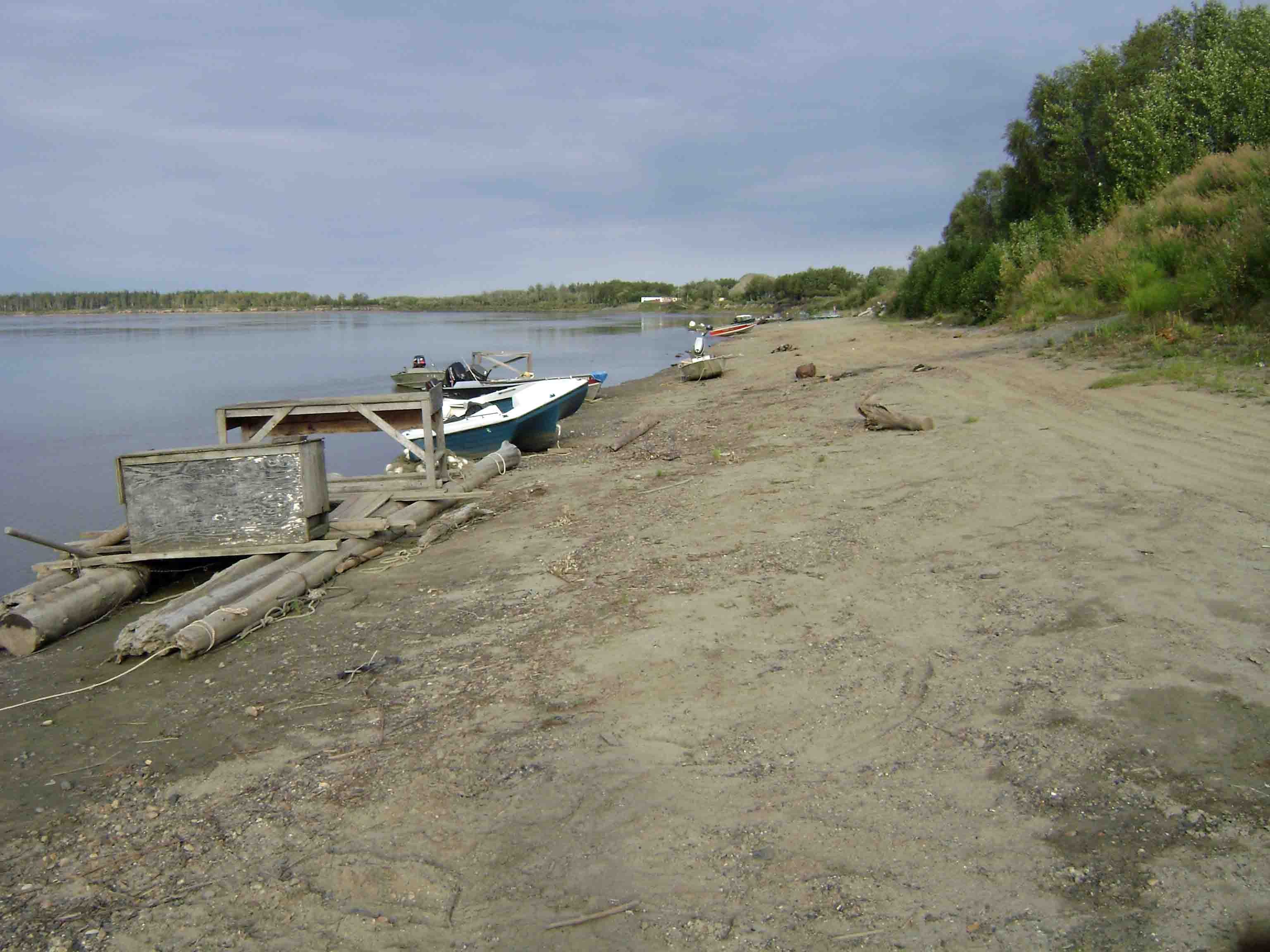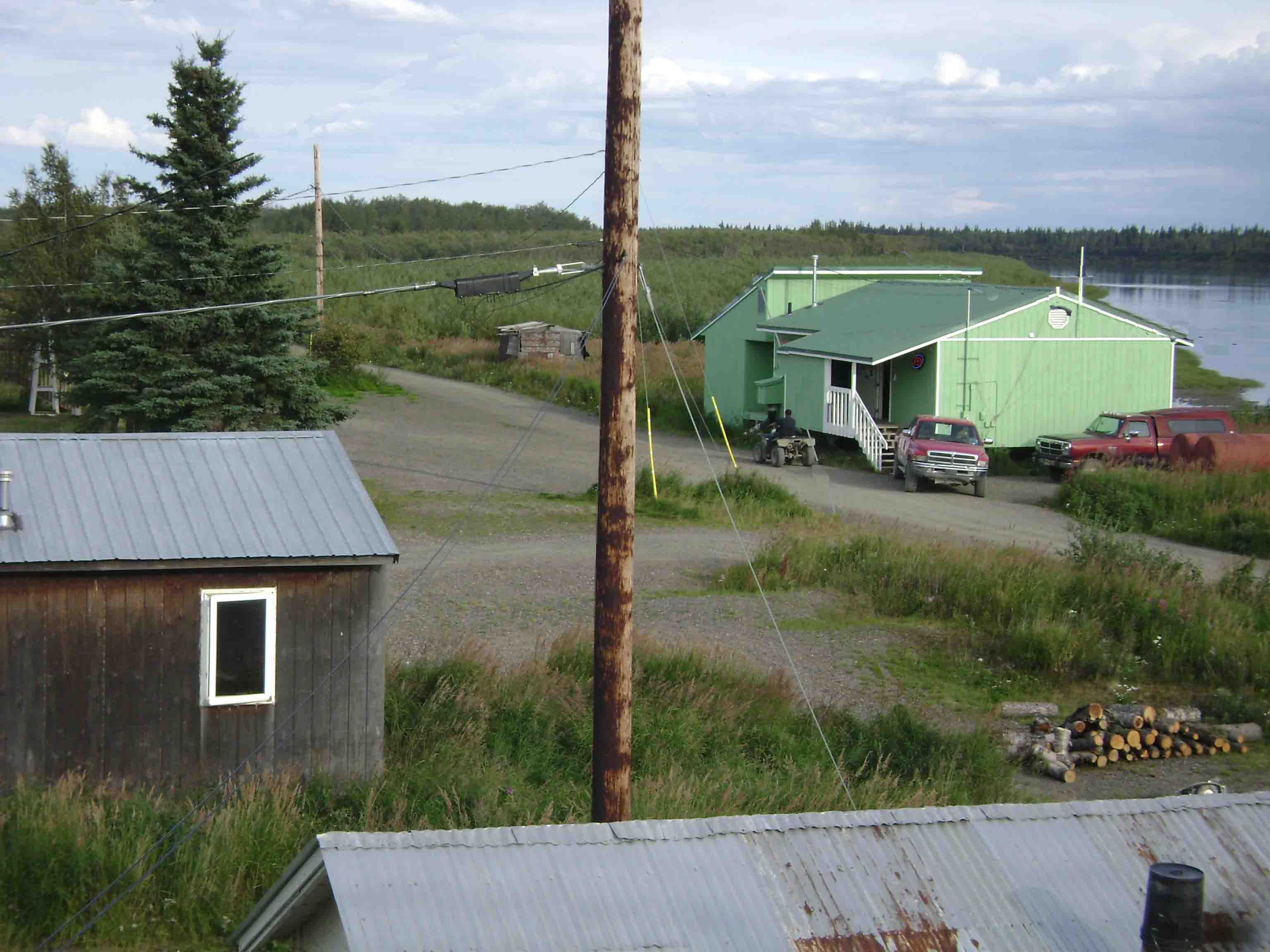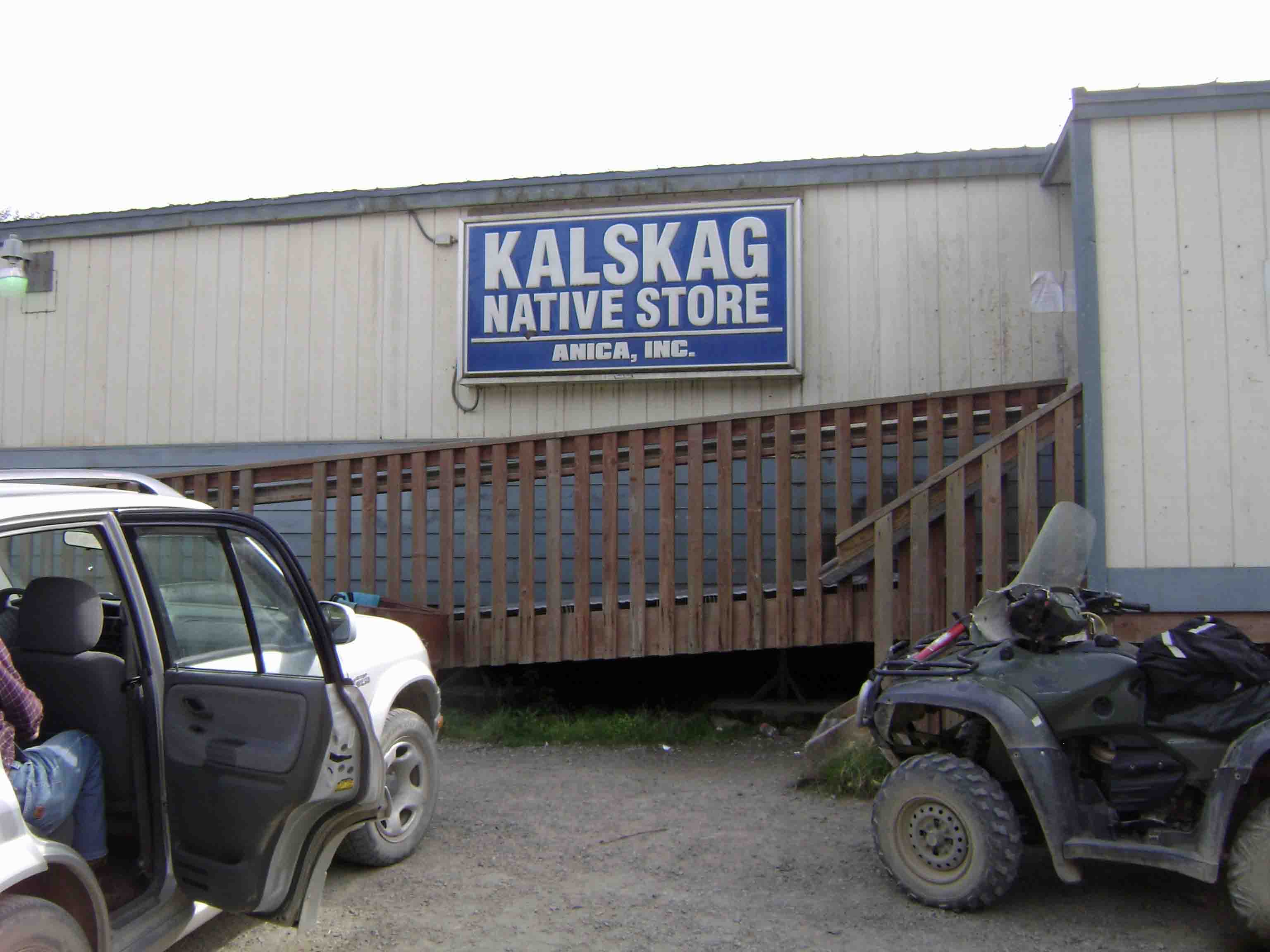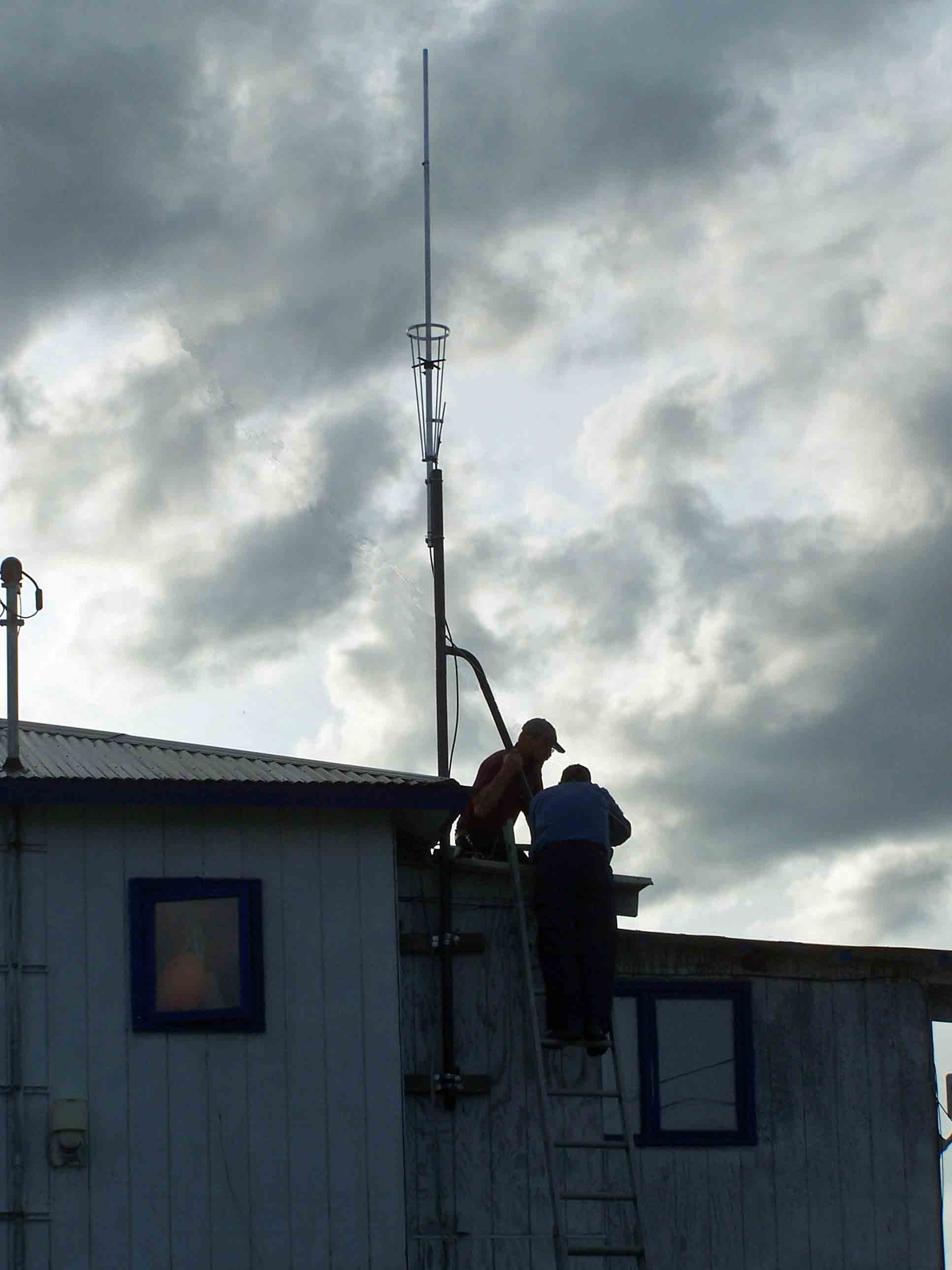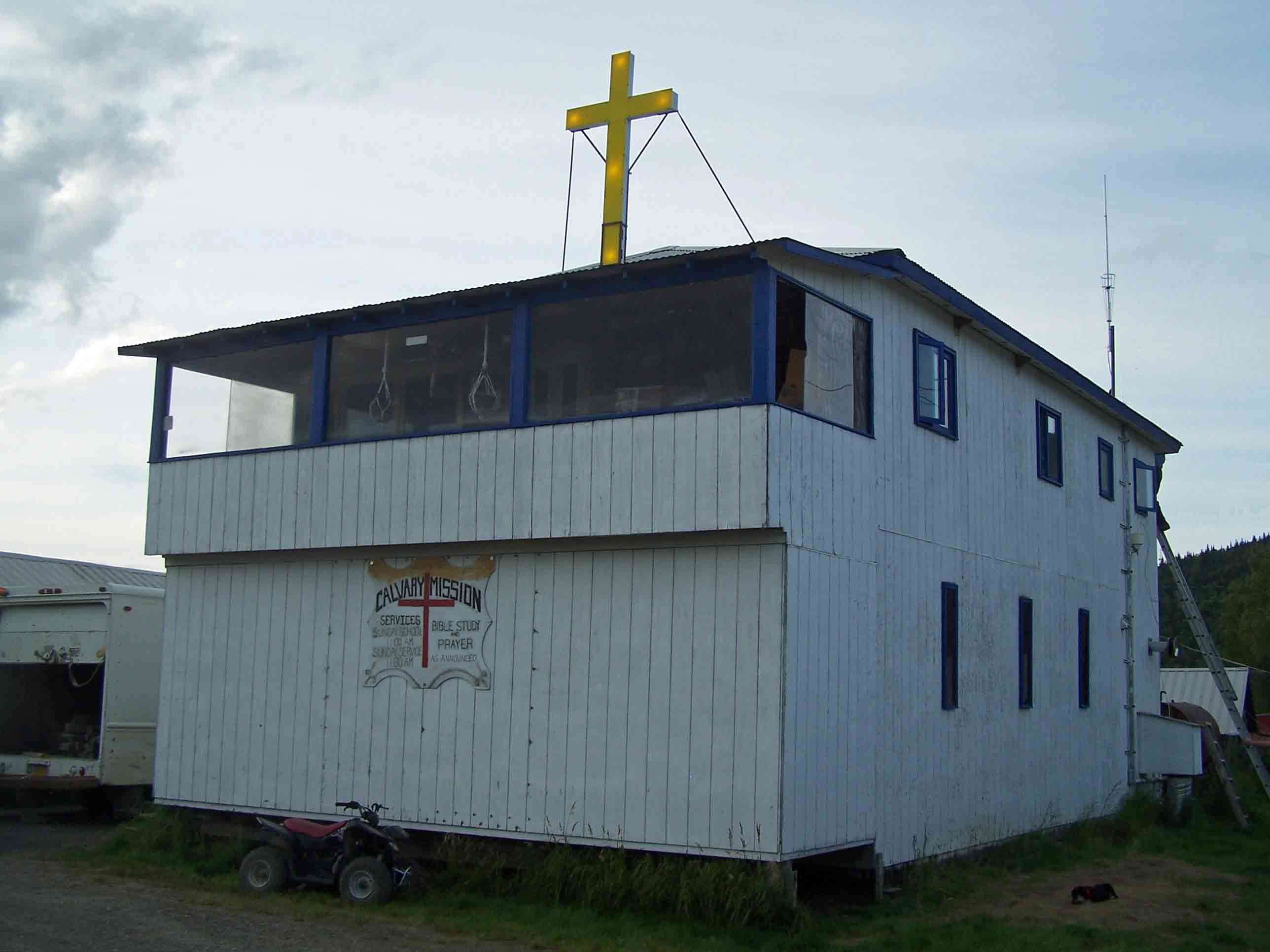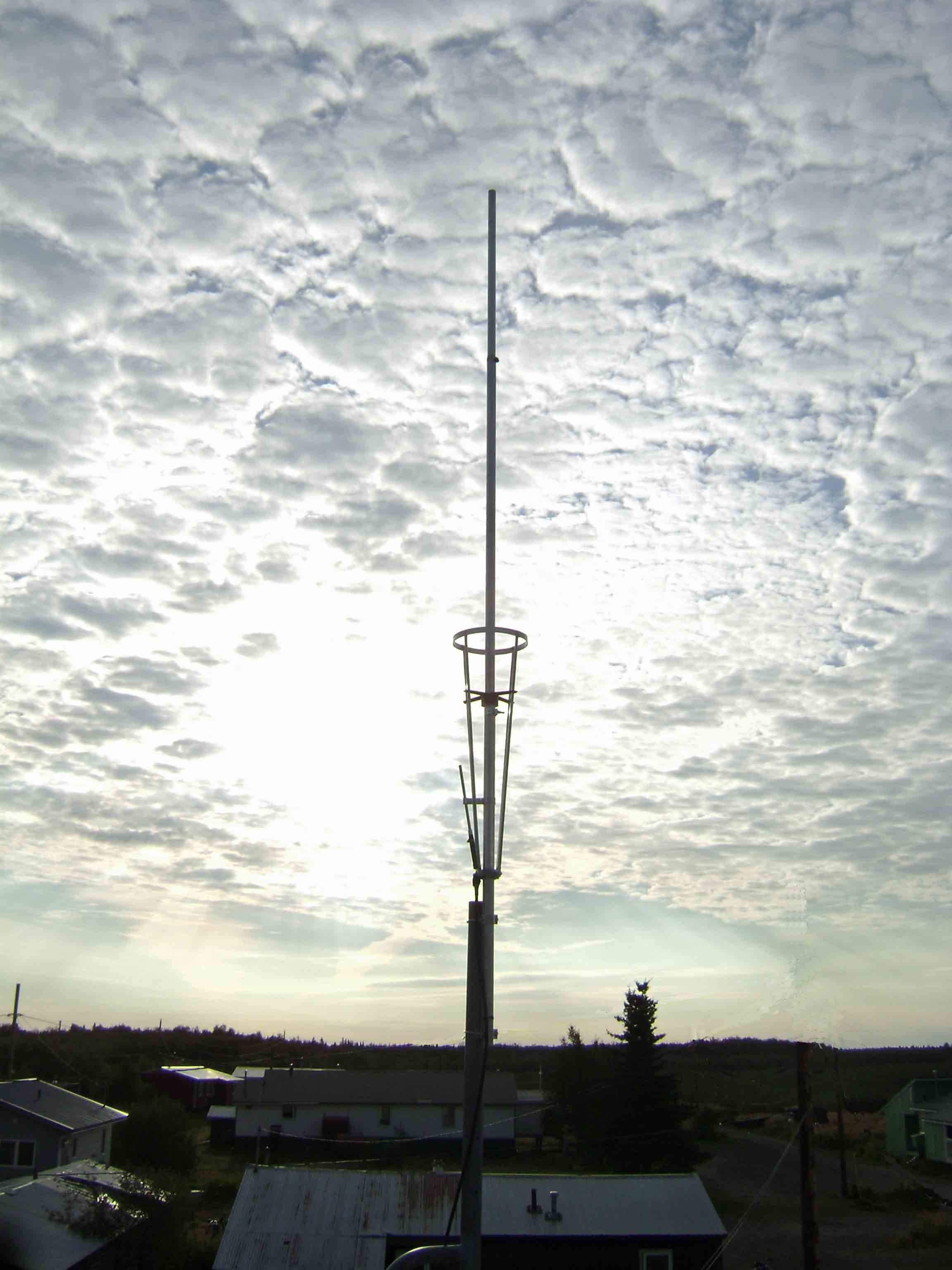Village Name: Kalskag
(Part of the I-AM Radio Network)
Translator Status: Voice for Christ Ministries submitted an application for a Kalskag translator station to the Federal Communication Commission in March of 2003, but the final approval of that application was not granted until November 4, 2013, over ten years later. The station was then planned for construction during the 2015 summer season, but resources unexpectedly became available in 2014. The Calvary Mission Church in Upper Kalskag agreed to host the station and required equipment was procured in June and July. It was necessary to obtain a minor change in broadcast frequency from 94.3 MHz to 93.7 MHz in order to avoid conflict with the recentlly constructed Aniak station. As a result of that change the FCC changed the station designation from K232EU to K229CV. The actual construction of the station was completed on August 21st, 2014. K229CV is the very first FM station of any type to be heard in the villages of Kalskag. We praise God for His provision to allow this station to begin broadcasting His message to the people He loves in these villages in His perfect timing.
The Google image below shows the two villages of Upper Kalskag and Lower Kalskag along the Kuskokwim River with the airport between them. Click on the image for a link to open the Google Map of the Kalskag area.
History of Upper Kalskag: In 1898, Nicholas Kameroff, Sr., Olinga (Avakumoff) Kameroff, and their eight children first settled the community. The village was a fish camp known as "Kessiglik." Around 1900, residents of "Kalthagamute" began to move to the village. In 1930 the BIA established a government school, and by 1932 residents of neighboring communities had relocated to Kalskag. In 1940 Paul Kameroff, Sr., established a general store, post office, coffee shop, and barging company. At this time, the community owned and worked a herd of 2,100 reindeer. During the 1930s, Russian Orthodox practitioners in the village relocated to establish Lower Kalskag, three miles to the southwest. The villagers who remained were primarily Roman Catholic practitioners. The city was incorporated in 1975.
| Population by Race | Upper Lower | Total Percent |
|---|---|---|
| White | 14 7 | 21 4.27 % |
| American Indian and Alaska Native Alone | 171 260 | 431 87.60 % |
| Black or African American | 1 1 | 2 0.41 % |
| Asian alone | 0 0 | 0 0.00 % |
| Pacific Islander alone | 0 0 | 0 0.00 % |
| Other alone | 1 0 | 1 0.20 % |
| Two or More Races | 23 14 |
37 7.52 % |
| Housing Units | Upper Lower |
|---|---|
| Total Housing Units | 74 82 |
| Occupied Housing (Households) | 60 75 |
| Vacant Housing | 14 7 |
| Vacant Due to Seasonal Use | 1 0 |
| Owner-Occupied Housing | 37 53 |
| Renter-Occupied Housing | 3 22 |
| Households | Upper Lower |
|---|---|
| Total Households | 60 75 |
| Average Household Size | 4 4 |
| Family Households | 44 55 |
| Non-Family Households | 16 20 |
| Pop. Living in Households | 210 282 |
| Pop. Living in Group Quarters |
0 0 |
Municipal Facilities and Utilities: Watering point, piped sewer, electric, health clinic, Public Safety Officer, bulk fuel facility, volunteer fire department, community hall, roads, landfill.
Power Source: Diesel generators - Alaska Village Electric Cooperative
Cost of Gasoline: $6.25 as of July 2014
Some information on this page has been copied from the State of Alaska Community Database for Upper Kalskag and Lower Kalskag where additional information is available.
If you wish to help financially with the construction and operation of K229CV or other KYKD translator stations, you may send a donation to Voice for Christ Ministries, P.O. Box 474, Nenana, AK 99760, or to give via credit card or PayPal use this button:
Pictures of Kalskag:
Upper Kalskag on the north shore of the ice-filled Kuskokwim River during "breakup."
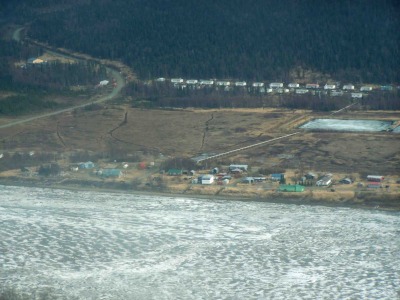
View to the north of Upper Kalskag. The large white building in the center of the photo near the river is Calvary Mission Church, the host for station K229CV.
View to the southwest of Lower Kalskag looking downstream along the Kuskokwim River.
Looking south across the Kuskokwim River from the shore in Upper Kalskag.
The shoreline of the Kuskokwim River in Upper Kalskag looking downstream to the west.
Looking to the east, upstream on the Kuskokwim River, from the roof of Calvary Mission Church. The green building is the Ausdahl Mercantile, a general store serving Upper Kalskag.
The Kalskag Native Store, the general store serving Lower Kalskag.
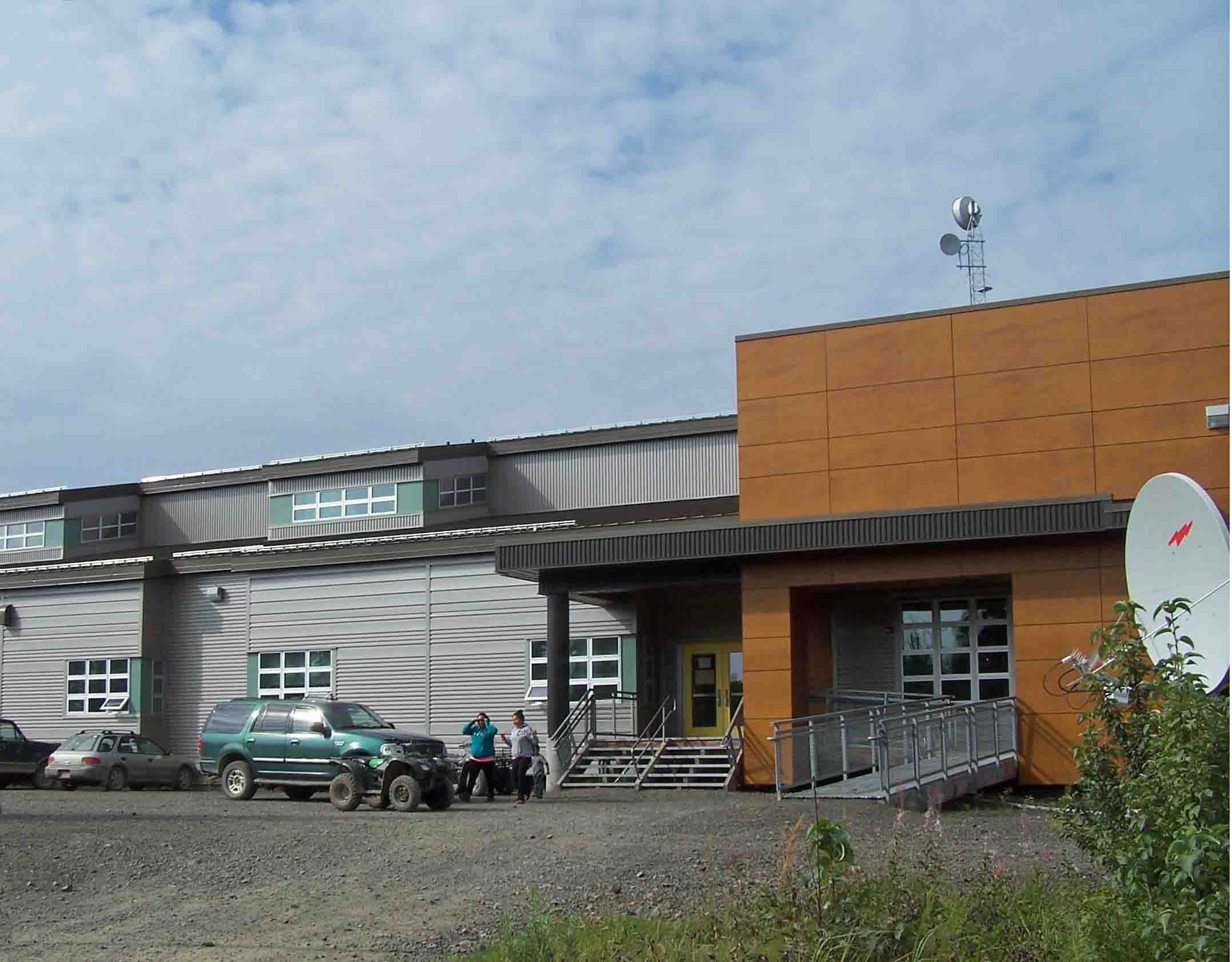
Erecting the broadcast antenna in the roof the Calvary Mission Church.
Calvary Mission Church just moments before K229CV began broadcasting from the antenna on the back of the church. That was the first FM broadcast ever received in this village.
Please pray that the the Gospel message of Jesus Christ will have eternal effect in the lives of listeners in the villages of Kalskag as they hear that Good News broadcast from this antenna.








